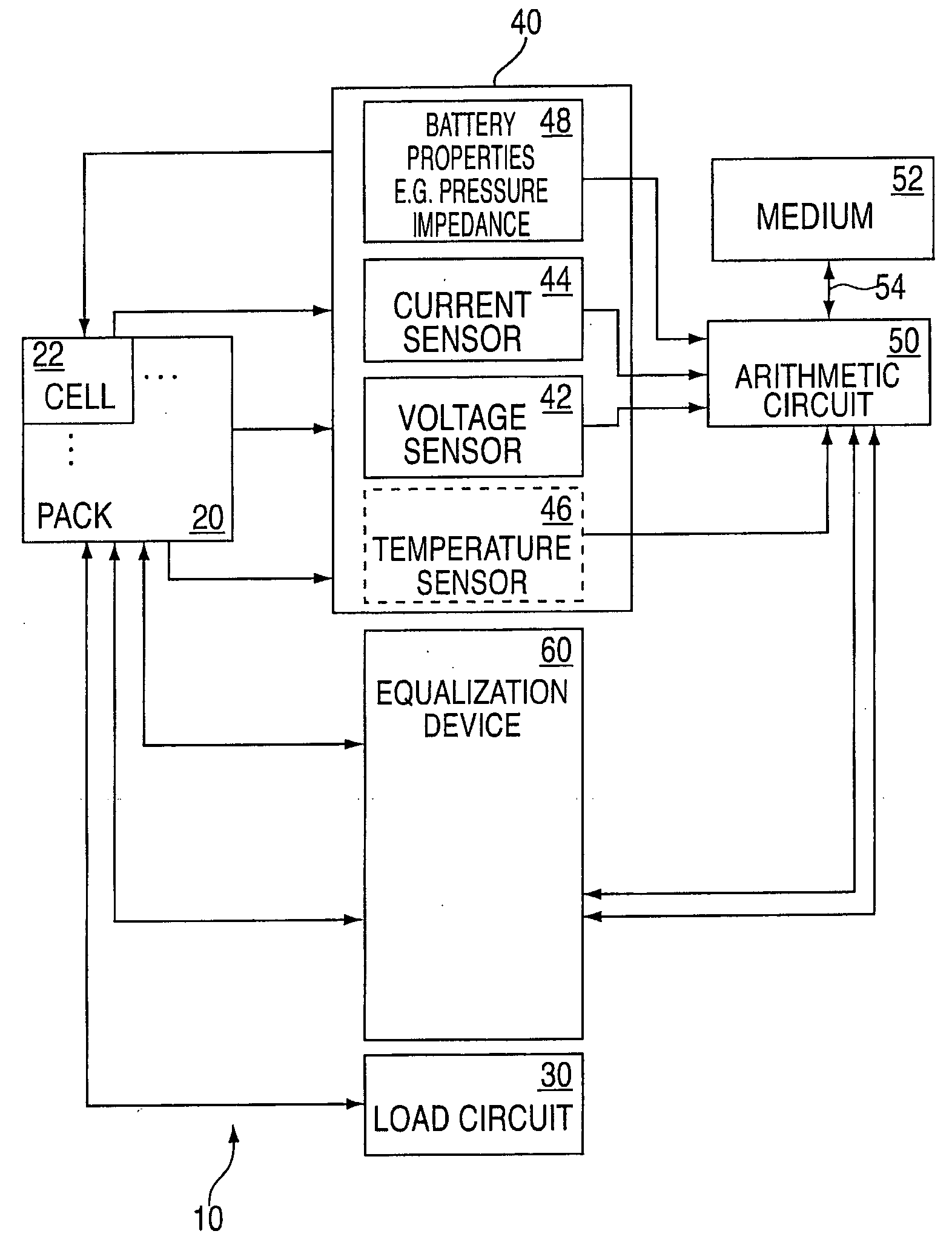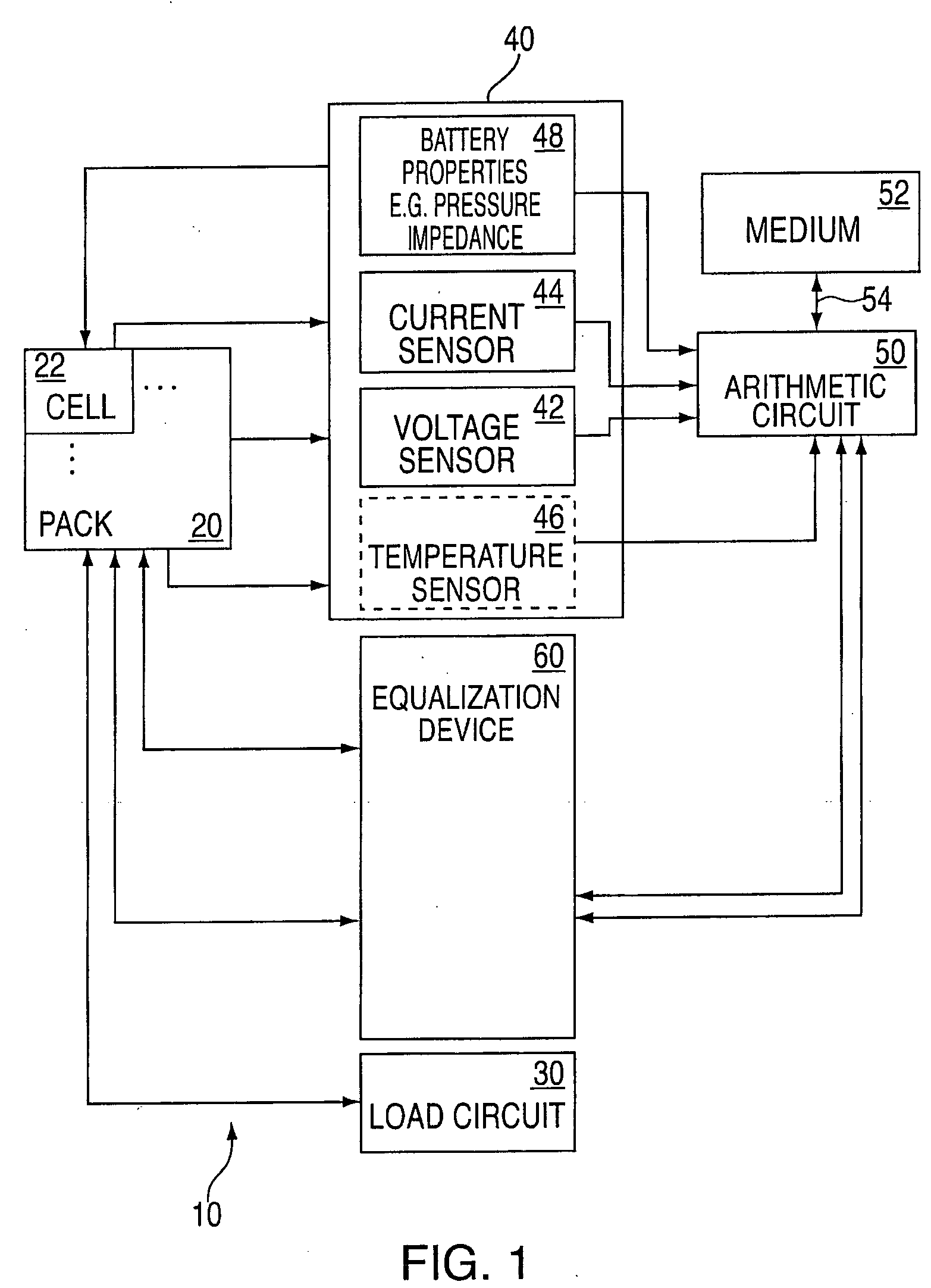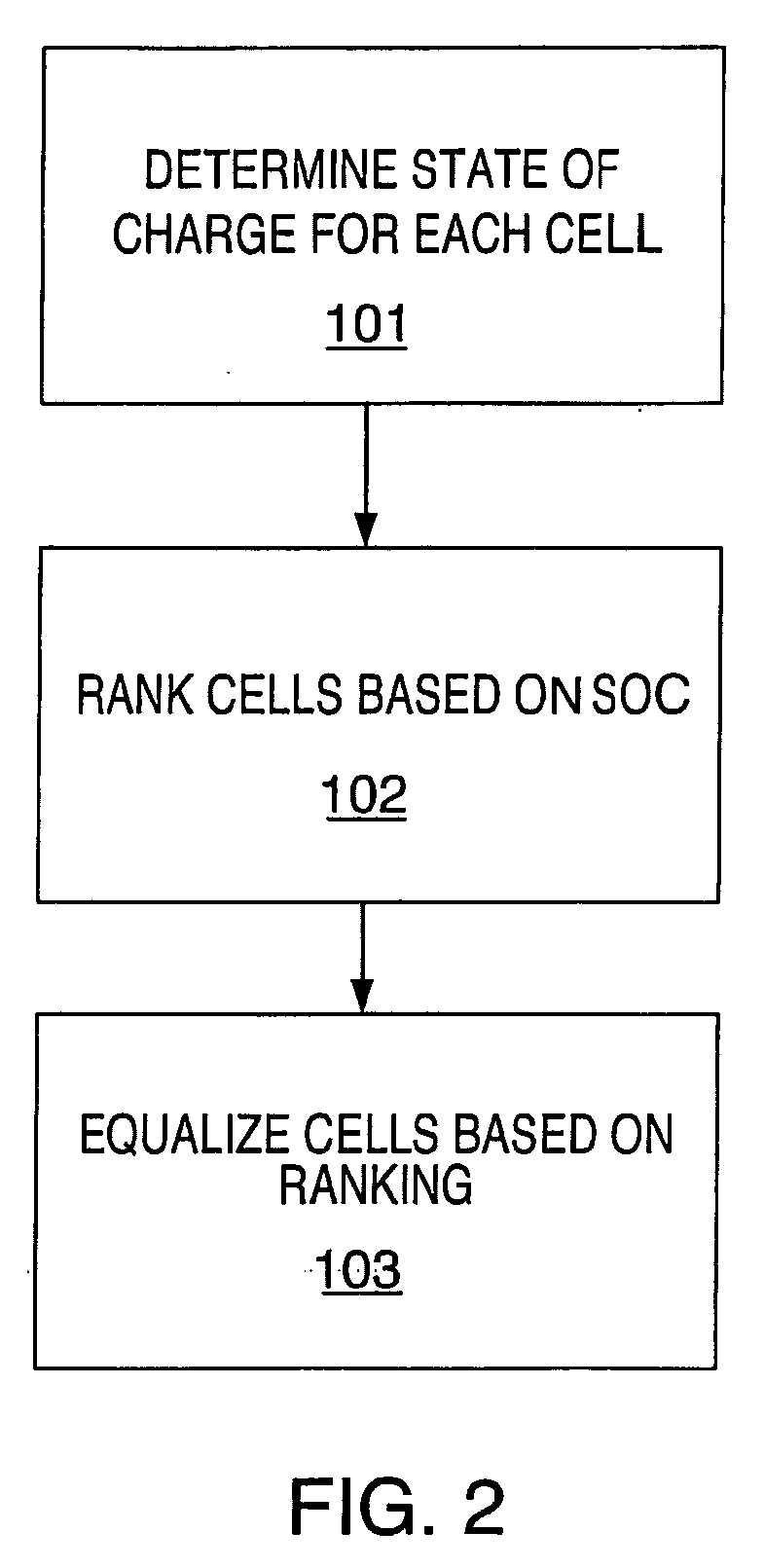Method and system for cell equalization using state of charge
a cell equalization and state technology, applied in the field of cell equalization in multi-cell battery packs, can solve the problems of limiting discharge ability, causing state of charge to drift apart from each other, and affecting the state of charge, so as to facilitate the determination of state of charg
- Summary
- Abstract
- Description
- Claims
- Application Information
AI Technical Summary
Benefits of technology
Problems solved by technology
Method used
Image
Examples
Embodiment Construction
[0017] Disclosed herein in one or more exemplary embodiments is a methodology and system for cell equalization using state of charge (SOC). In particular, by employing additional information such as the individual cell SOC estimates, and possibly individual capacities and / or cell Coulombic efficiencies, beyond cell voltage, equalization of a plurality of cells is possible. In another exemplary embodiments SOC computed based on standard, or dual Kalman filtering or a standard, or dual extended Kalman filter, equalizing cell voltage is further enhanced to maximize battery pack level of charge and discharge power.
[0018]FIG. 1 shows the components of a cell equalization system 10 according an embodiment of the present invention. Electrochemical cell pack 20 comprising a plurality of cells 22, e.g., battery is connected to a load circuit 30. For example, load circuit 30 could be a motor in an Electric Vehicle (EV) or a Hybrid Electric Vehicle (HEV). An apparatus for measuring state of c...
PUM
 Login to View More
Login to View More Abstract
Description
Claims
Application Information
 Login to View More
Login to View More - R&D
- Intellectual Property
- Life Sciences
- Materials
- Tech Scout
- Unparalleled Data Quality
- Higher Quality Content
- 60% Fewer Hallucinations
Browse by: Latest US Patents, China's latest patents, Technical Efficacy Thesaurus, Application Domain, Technology Topic, Popular Technical Reports.
© 2025 PatSnap. All rights reserved.Legal|Privacy policy|Modern Slavery Act Transparency Statement|Sitemap|About US| Contact US: help@patsnap.com



